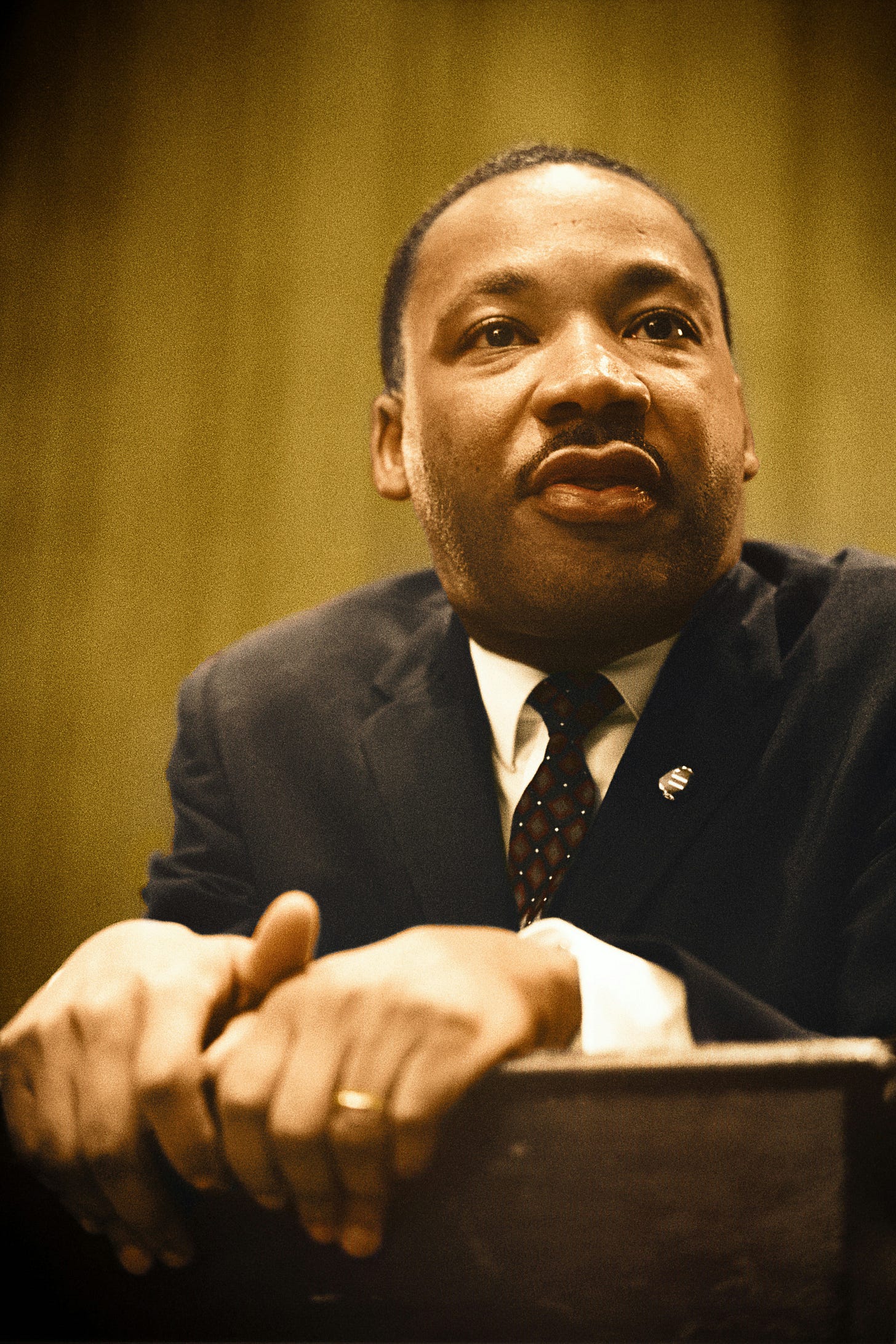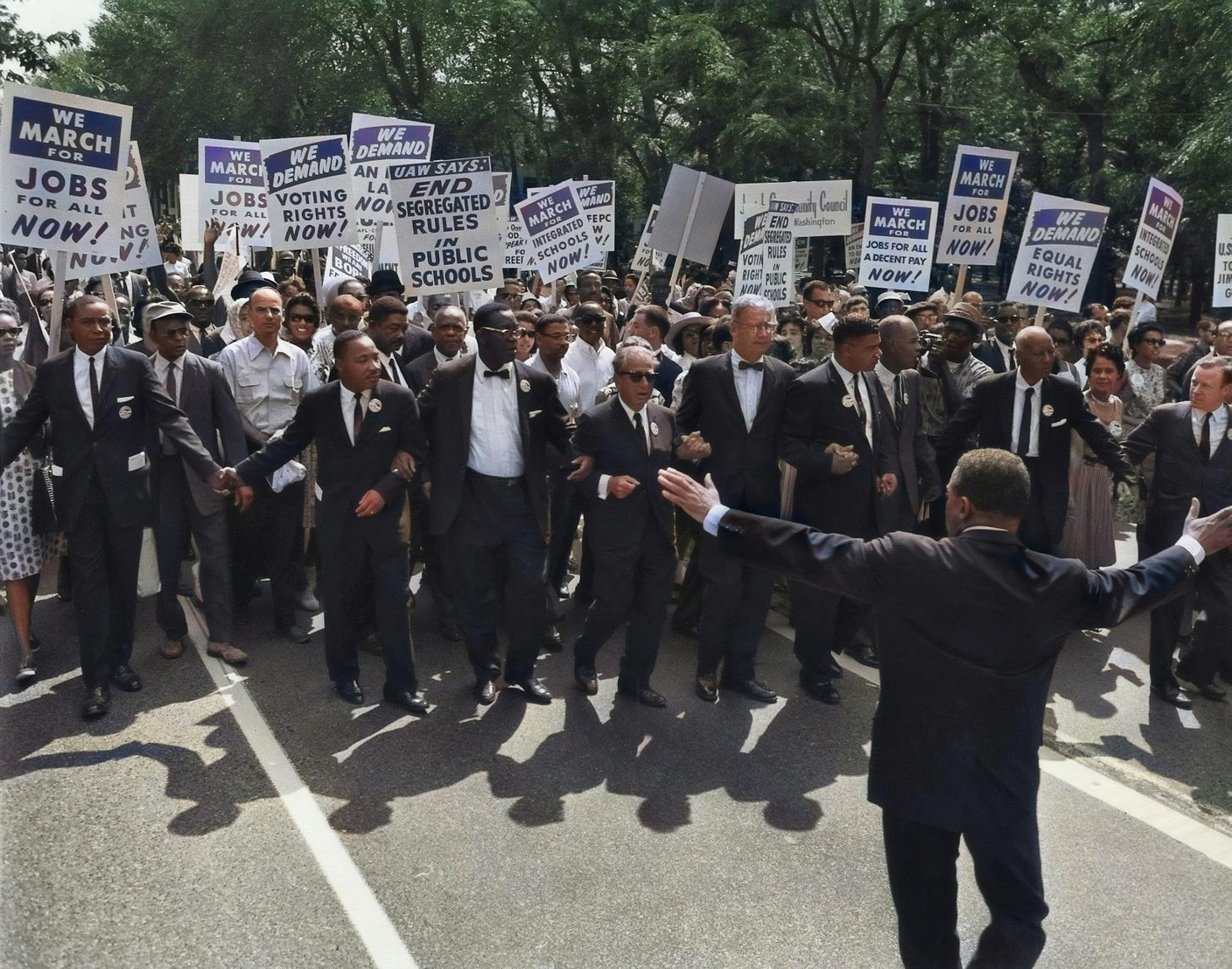How I learned to be a pastor
Or, the story of my first MLK Day observance, thanks to church member John O'Melia
At some point in my career, I began to realize that it was church members who were teaching me how to be a pastor. It wasn’t the fancy east coast seminary I attended, or the many fine books about ministry I read, or even the conferences I attended, the ones where celebrity pastors always seemed to be the keynote speakers.
I now see that it was church members who taught me, gently but persistently, not only how to love and care for them, but also how to act out the public life of a pastor.
I was living and working in Wheaton, Illinois, more than 10 years after my ordination, when a church member invited me to go with him to the annual Martin Luther King, Jr. Day worship service at the Second Baptist Church in Wheaton.
I’m sure I resisted—first, because going to MLK Day services was never mentioned by those celebrity pastors, who instead would offer advice on “how to grow your church”; and second, because MLK Day falls on a Monday, which was my day off.
Gently but persistently, this church member talked me into going with him on a cold Monday night in January. I was still new and didn’t know at the time that Wheaton had a black congregation. The city seemed to me to be a white and mostly conservative Republican suburb of Chicago, much like the community in Michigan where I grew up. My neighbors were white, the members of my church were white, and my children seemed to have only white classmates in their schools and on the soccer teams sponsored by the recreation department. I fit right in.
John O’Melia, the church member who picked me up that night, had been on the search committee that brought me to First Presbyterian Church, with its fine red brick, white pillars, and impressive colonial architecture. What I didn’t know when I first met John was that he came back from World War II with a burning determination to live in a world where the atrocities he witnessed (in the Nazi death camp he helped to liberate at the age of 19) would be unimaginable.
After finishing college, John went to work for the YMCA. All I knew at the time was that the YMCA was where many people learn how to swim. What I didn’t know until I met John was that the YMCA offers more than swimming lessons. In the 1950s, in the mostly white suburbs of Cleveland, in John’s first posting as a Y director, he initiated the YMCA’s first interracial summer camp.
It wasn’t a popular move. People were skeptical. Okay, they were more than skeptical. Many were outraged and would not allow their children to participate. But John gently persisted and over the years introduced other equally unpopular ideas. Many years later, after his retirement, he was elected to the YMCA Hall of Fame for a lifetime of seeking racial harmony and justice. At the induction ceremony, I learned that John’s father, uncle, and brother had all been YMCA directors.
John and I were the only two white faces in the church that night, and I was immediately struck by how wrong that seemed to me. Martin Luther King, Jr. Day is a federal holiday, after all, but the only people observing it that night were the city’s African American residents. I kept thinking, “Where is everyone else?”
The pastor of the Second Baptist Church recognized me in the congregation that night and made a point to apologize after the service. “In African American churches,” he said, “pastors don’t sit by themselves in the congregation. They sit up front.” And so, the next year I sat in a row of other pastors at the front of the church. I don’t recall having a speaking part, but there I was, sitting with my African American colleagues, which was a message in itself.
Looking back, I learned from John how a pastor should look and act in the community, how someone dedicated to the gospel of Jesus Christ should spend his Monday nights in January.
The last year I was in Wheaton, the MLK Day service was held at my church, the lovely First Presbyterian Church. My church could accommodate more people (the number of white people who attended had begun to grow, slowly at first, but noticeably). More importantly the big white wealthy church in town was making a kind of statement about the gospel, about how people should treat each other, and about what our community could be, if we wanted it to be. That was something I learned from my friend John.
Photos: All three photos are from Unsplash, and the top one is by Tim Mossholder. Thanks, Tim.







I'm happy to learn of your experience, Jim. As you probably know, the last five years of my ministry before retirement were in a multicultural church which claimed two dozen nationalities on any given Sunday morning. It can be - and was for me - a rich and eye-opening experience. I've never worked so hard to listen and attempt to understand. But it is hard work!
Pastor Doug, your powerful testimony was truly inspiring and filled with wisdom, reminding us all to reflect on Dr. Martin Luther King Jr.'s legacy and to work together to keep his message and mission alive.